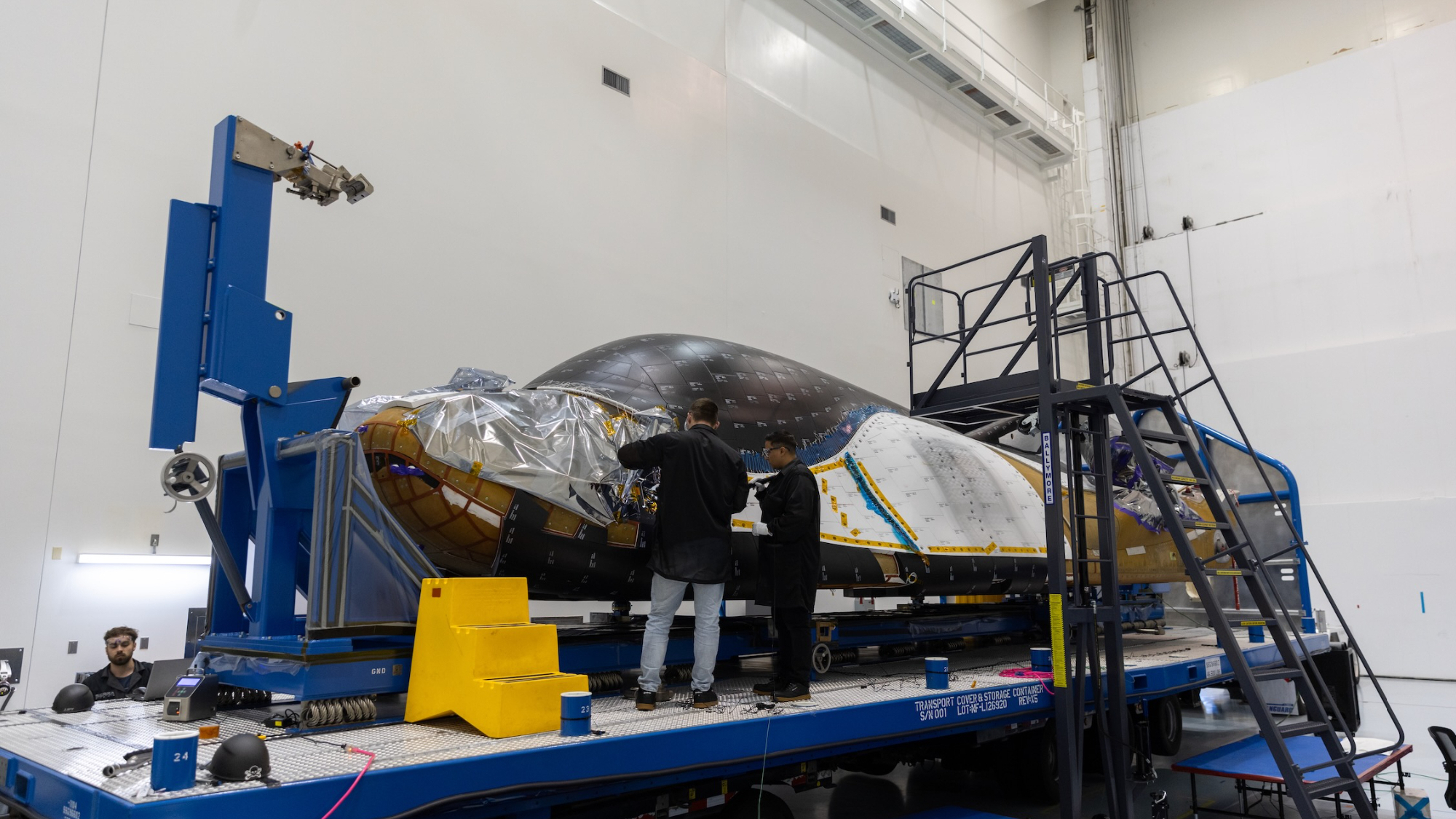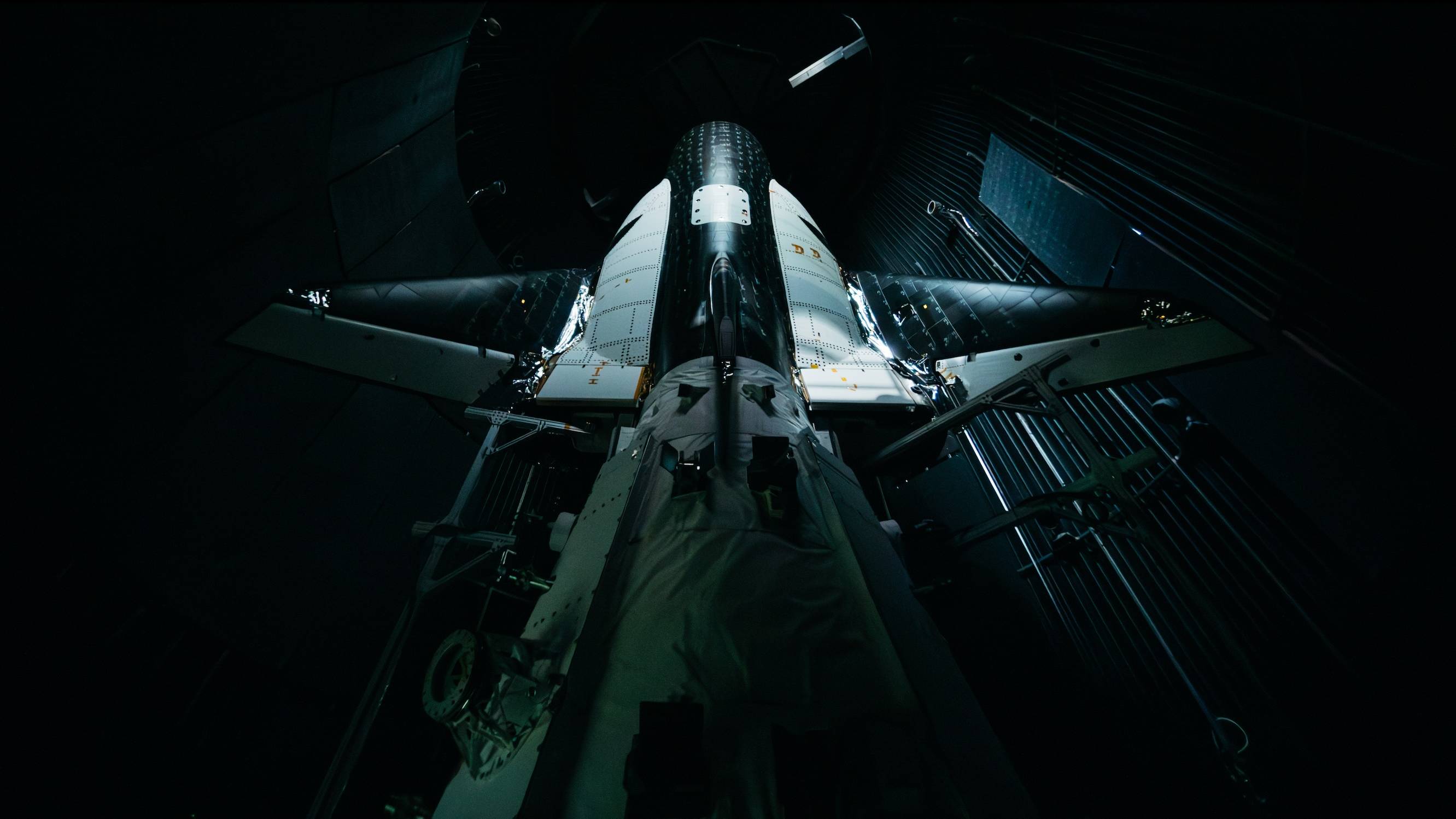Dream Chaser space plane arrives in Florida ahead of 1st launch to ISS (photo)
The vehicle, named Tenacity, will reach orbit in the coming months, if all goes to plan.

The first Dream Chaser space plane has reached Florida's Space Coast to get ready for its upcoming liftoff.
The robotic Dream Chaser, which is built by Colorado company Sierra Space, arrived at NASA's Kennedy Space Center (KSC) on Saturday (May 18) for final testing and processing ahead of its first-ever cargo flight to the International Space Station (ISS). The space plane is called "Tenacity" and, paired with the cargo module "Shooting Star," will furnish supplies to the ISS in the near future.
Tenacity's first flight, expected in late 2024, will lift off atop United Launch Alliance's new Vulcan Centaur rocket from Cape Canaveral Space Force Station, which is next door to KSC. Space plane and module combined will send 7,800 pounds (3,500 kilograms) of cargo to the orbiting lab, NASA officials wrote in a statement on Monday (May 20).
Related: Sierra Space unveils Dream Chaser space plane ahead of 1st flight to ISS (video)
Dream Chaser, which can send either cargo or astronauts to low Earth orbit depending on the variant, is a spacecraft whose design borrows from NASA's space shuttle and Soviet-era designs.
Dream Chaser was an early entrant under NASA's Commercial Crew Program, while under the stewardship of predecessor entities to Sierra Space (SpaceDev, and then Sierra Nevada Corp., or SNC.)
Dream Chaser was not selected under for commercial crew flights; NASA instead chose SpaceX's Crew Dragon and Boeing's Starliner in 2014. SNC filed a protest to the U.S. Government Accountability Office that September, alleging "serious questions and inconsistencies in the source selection process," but the GAO later ruled against SNC, finding no issues with the evaluation.
Breaking space news, the latest updates on rocket launches, skywatching events and more!
SNC later received a Commercial Resupply Services 2 (CRS-2) contract from NASA in 2016, tasking the company with completing at least six flights to the ISS. (SpaceX and Orbital ATK, now part of Northrop Grumman, also received funding for their Dragon and Cygnus vehicles, respectively.) Dream Chaser prototypes have additionally completed ground testing, as well as autonomous glide flights in Earth's atmosphere, in the last decade or so.
Development delays are common in large programs, but Sierra Space (the current name of Dream Chaser's developer) has made key progress in recent months.
NASA officials put the space plane through its paces at NASA's Neil Armstrong Test Facility in Ohio earlier this year, alongside the Shooting Star cargo module.
The Ohio work included vibration testing and scrutinizing the systems for their ability to function in low pressures and extreme temperatures akin to space, agency officials have said. Forthcoming KSC activities include "acoustic and electromagnetic interference and compatibility testing, completion of work on the spaceplane’s thermal protection system, and final payload integration," NASA added in Monday's statement.

Elizabeth Howell (she/her), Ph.D., was a staff writer in the spaceflight channel between 2022 and 2024 specializing in Canadian space news. She was contributing writer for Space.com for 10 years from 2012 to 2024. Elizabeth's reporting includes multiple exclusives with the White House, leading world coverage about a lost-and-found space tomato on the International Space Station, witnessing five human spaceflight launches on two continents, flying parabolic, working inside a spacesuit, and participating in a simulated Mars mission. Her latest book, "Why Am I Taller?" (ECW Press, 2022) is co-written with astronaut Dave Williams.

